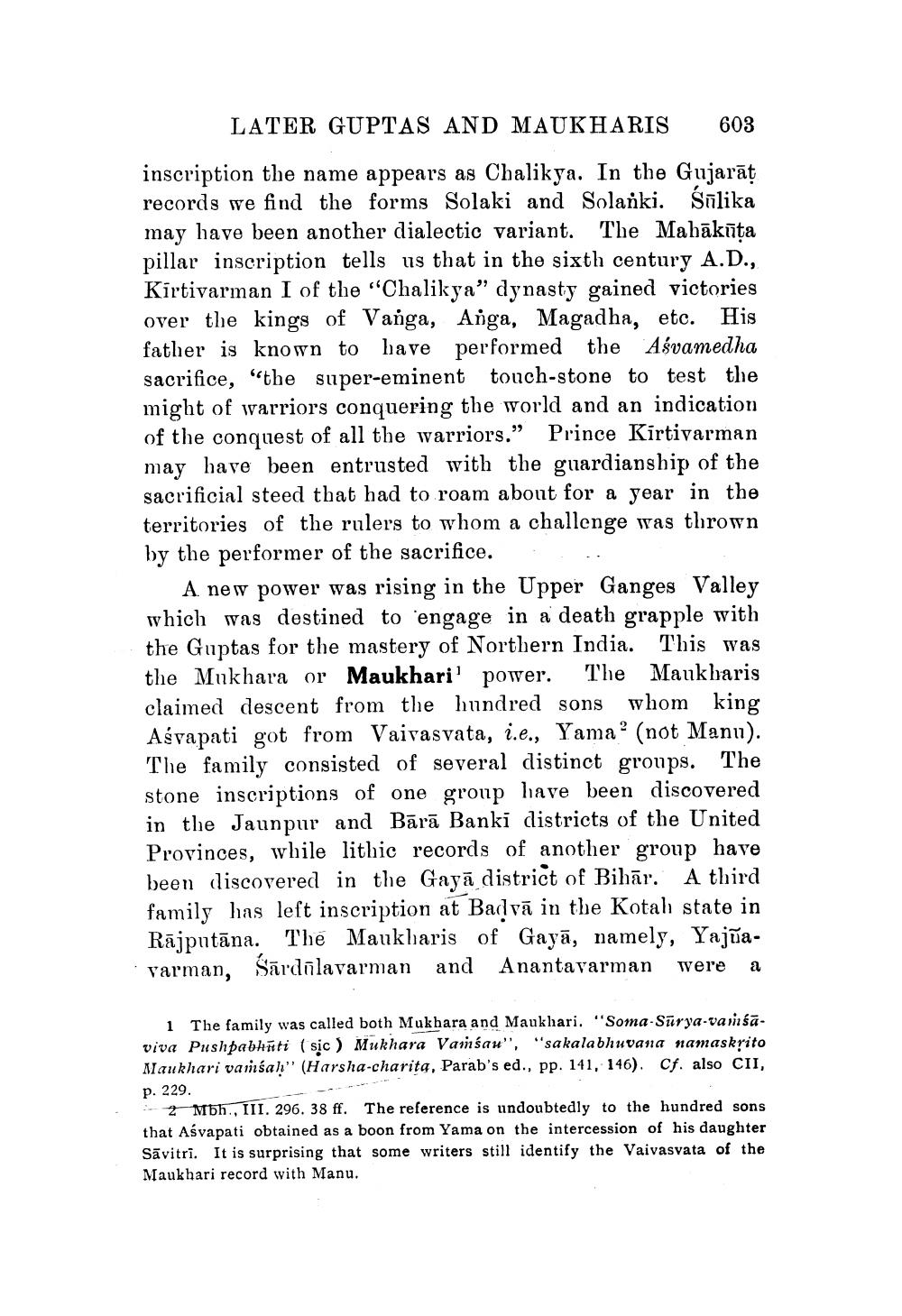________________
LATER GUPTAS AND MAUKHARIS 603 inscription the name appears as Chalikya. In the Gujarāt records we find the forms Solaki and Solanki. Śūlika may have been another dialectic variant. The Mabākūta pillar inscription tells us that in the sixth century A.D., Kirtivarman I of the “Chalikya” dynasty gained victories over the kings of Vanga, Anga, Magadha, etc. His father is known to have performed the Aśvamedha sacrifice, “the super-eminent touch-stone to test the might of warriors conquering the world and an indication of the conquest of all the warriors." Prince Kirtivarman may have been entrusted with the guardianship of the sacrificial steed that had to roam about for a year in the territories of the rulers to whom a challenge was thrown by the performer of the sacrifice. ..
A new power was rising in the Upper Ganges Valley which was destined to engage in a death grapple with the Guptas for the mastery of Northern India. This was the Mukhara or Maukhari' power. The Maukharis claimed descent from the hundred sons whom king Ašvapati got from Vaivasvata, i.e., Yama? (not Manu). The family consisted of several distinct groups. The stone inscriptions of one group have been discovered in the Jaunpur and Bārā Banki districts of the United Provinces, while lithic records of another group have been discovered in the Gayā district of Bihār. A third family has left inscription at Badvā in the Kotah state in Rājputāna. The Maukharis of Gayā, namely, Yajñavarman, Sārdalavarman and Anantavarman were a
1 The family was called both Mukhara and Maukhari. "Soma-Sürya-vamśāviva Pushpabhati (sic) Mukhara Vamsau", "sakalabhuvana namaskrito Maukhari vamsal" (Harsha-charita, Parab's ed., pp. 141, 146). Cf. also CII, p. 229.
-Mbh., III. 296. 38 ff. The reference is undoubtedly to the hundred sons that Aśvapati obtained as a boon from Yama on the intercession of his daughter Savitri. It is surprising that some writers still identify the Vaivasvata of the Maukhari record with Manu.




